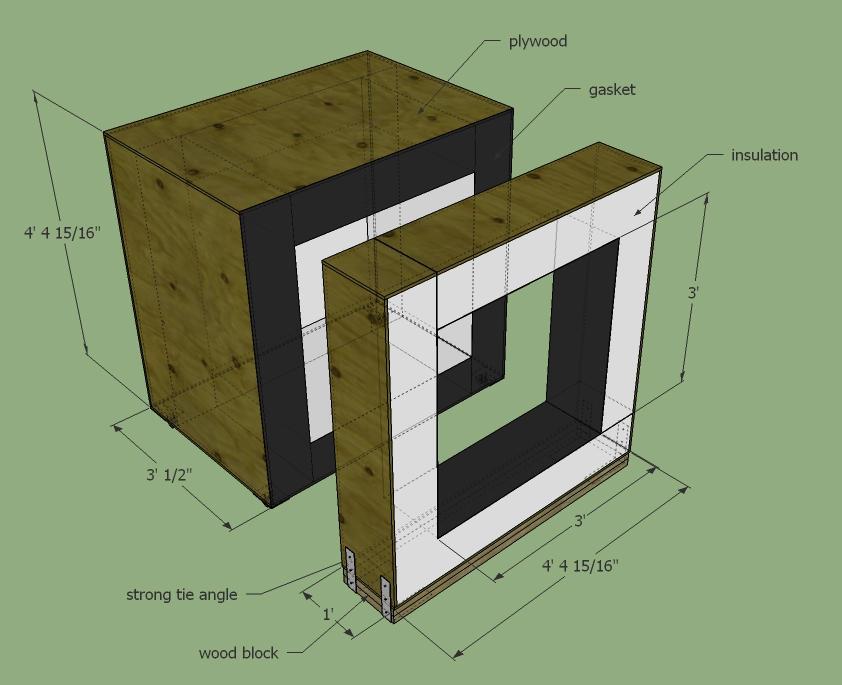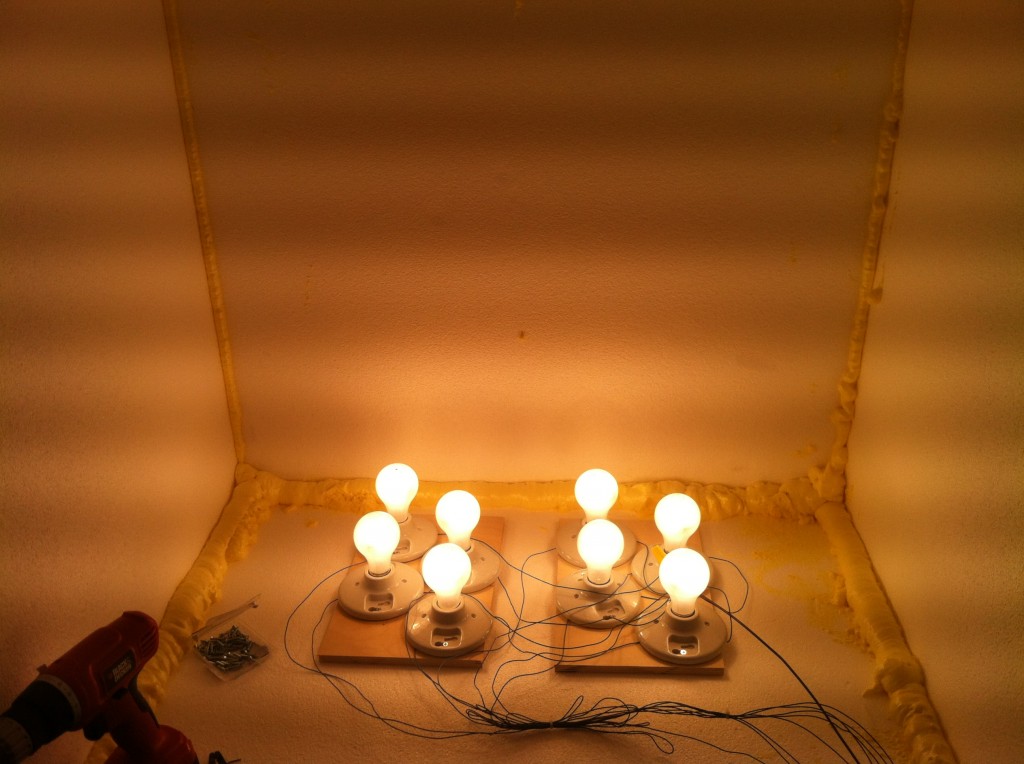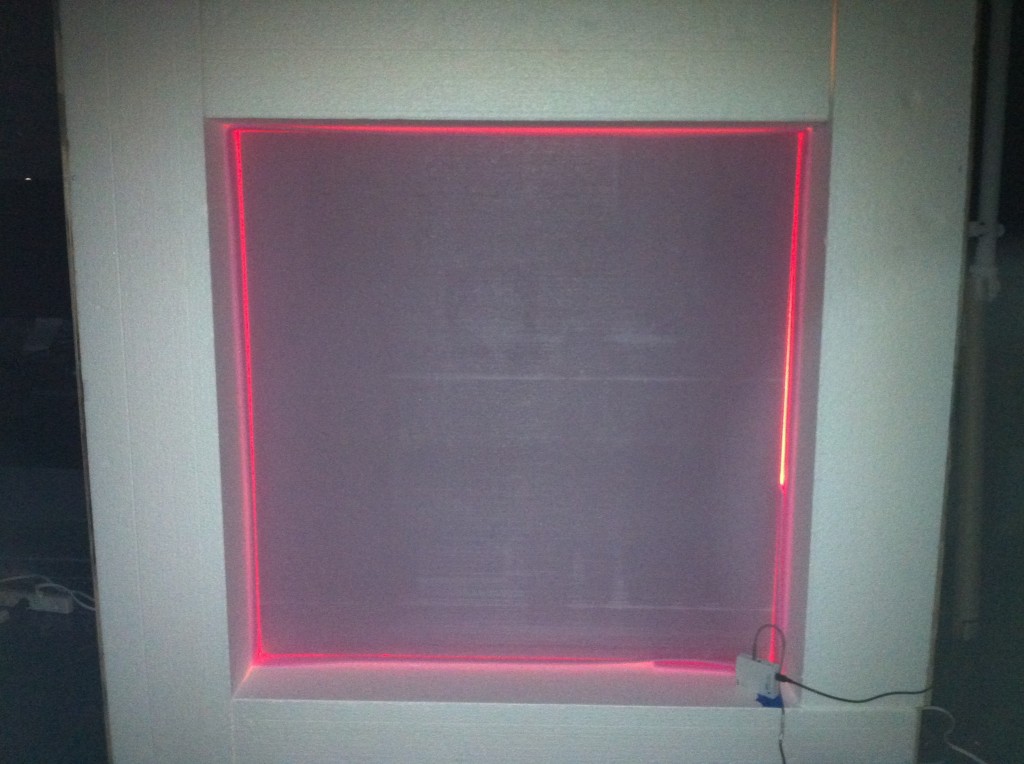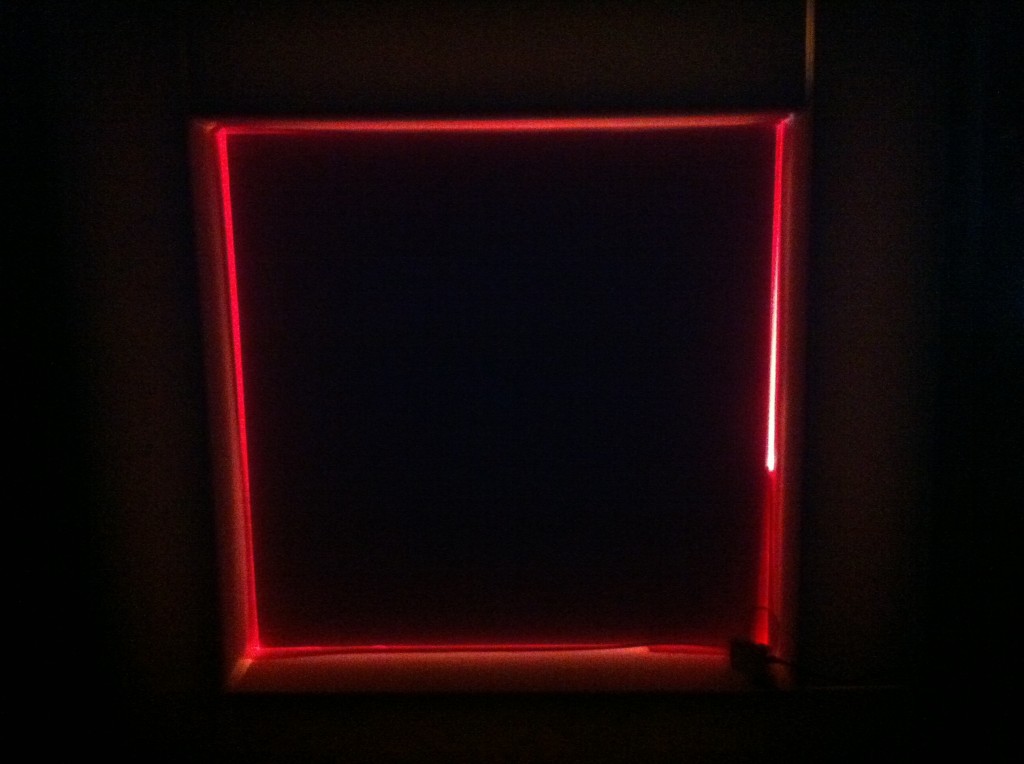Thermal performance of enclosures
There are a few different ways to assess the thermal performance of building enclosure materials, each with some advantages and disadvantages. One option is to follow ASTM Standard C177 or C518 and measure steady-state heat flux through individual samples of materials using a hot plate or heat flux meter apparatus. These are great for accurate measurements of thermal conductivity and thus R-values and U-values of homogeneous samples, but this method has limited use for complex geometries and real enclosure assemblies that may include thermal bridges. Another larger scale option that is more appropriate for complex enclosure geometries is outlined in ASTM C1363, which involves measuring heat flux through entire assemblies exposed to a hot box chamber on one side and a cold chamber on the other side. This method works very well for very large, realistic samples, but requires a lot of equipment and space that frankly we don’t have in my lab!
So we decided to design and build a smaller version of a hot box chamber for testing small, representative samples of actual building enclosure assemblies (primarily a variety of wall structures). The Hot Box 2000, as it is appropriately called, consists of a super-insulated (8″ expanded polystyrene foam insulation) hot box with silicone electric heaters connected in individual 25 W increments and a similarly insulated frame for holding the sample in question. At this point we don’t have a cold side but are simply using the room temperature of the lab as the “cold” side. We recently finished construction of the Hot Box 2000 and are moving into calibration and will be testing new materials as early as this fall. We will be able to use surface temperature measurements and heat flux measurements to estimate R-values and U-values under a range of temperature differences; we will also explore using a dynamic energy balance on the hot box air to see if we can achieve the same results with fewer measurements (and of course, at lower cost). Until then, see the pictures below of the Hot Box 2000.

How is this supposed to fit together??

Deion Debose presenting his work on the Hot Box 2000 to the Armour College of Engineering Program for Undergraduate Research in Engineering (PURE) poster session, summer 2013
Acknowledgements
Many thanks to Irina Susorova, Mackenzie Lin, Jun Lu, Deion Debose, Tiffanie Ramos, and Parham Azimi for their work on this project. Also thanks to George at ELFI Wall Systems and Steve Beck for their help on this project.







